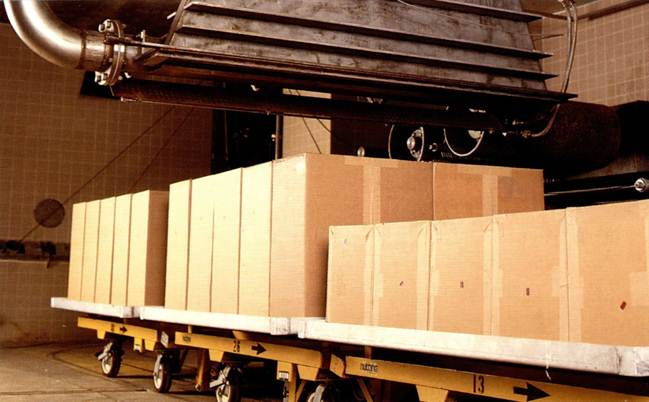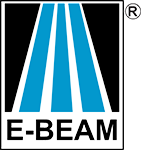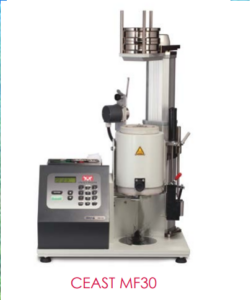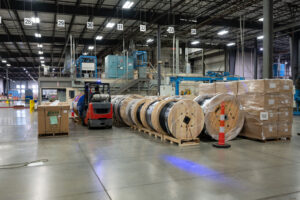The first thing to consider is that the parts are transported through the e-beam on a conveyor system using carts with the beam shooting down and through the parts. These carts vary in size. In New Jersey the carts measure 60 x 48 inches and in Ohio they measure 98 x 52 inches. In addition there is a height limitation of approximately 36 inches from the cart level to the scan horn that the parts pass under. That is the approximate physical capability for transporting a part to be irradiated.

 The next thing to be considered is the limitation in the beam penetration. This depends on the density of the part.
The next thing to be considered is the limitation in the beam penetration. This depends on the density of the part.
The density of the part will determine if it is to be e-beamed “one up” or multi layered. The MeV of the beam is the energy in “million electron volts” and the higher the MeV the greater the density that can be penetrated with an effective crosslinking dose. At E-BEAM Services we have accelerators that can operate from 1 MeV to 5 MeV.
For example, low bulk density parts (maybe hollow containers or formed parts) might be 12 inches high on the carts. Some plastic tanks more than 24-36 inches are penetrated successfully. On the other hand, solid polyethylene parts (flat sheets, for example) would be limited to about 1-2 inches thickness, depending on the material and allowable dose maximums and minimums.
In any case, the optimum bulk density under the beam is about 8 pounds per square foot on the cart.
E-BEAM Services can help you with a simple review of your parts material, size and packaging configuration to determine if your part can be arranged for e-beam crosslinking.
www.ebeamservices.com • Ohio (513) 933-0031 • New Jersey (609) 655-7460



